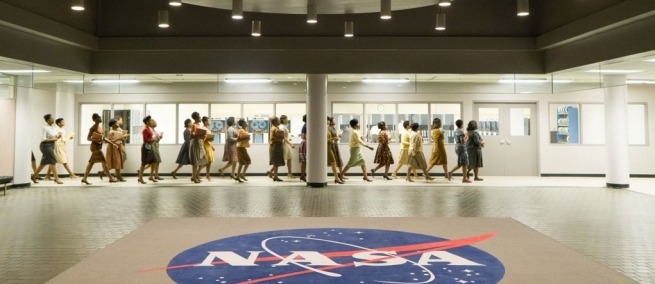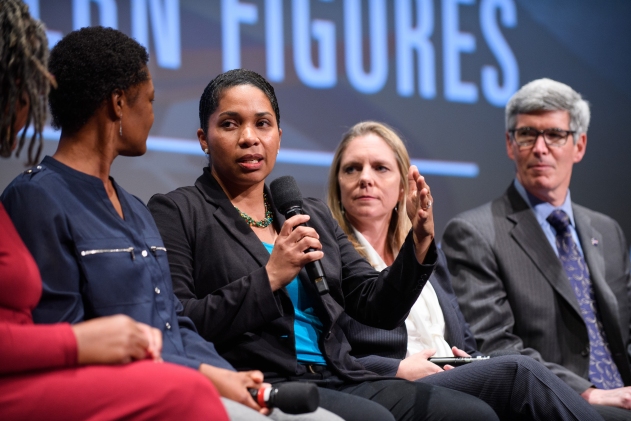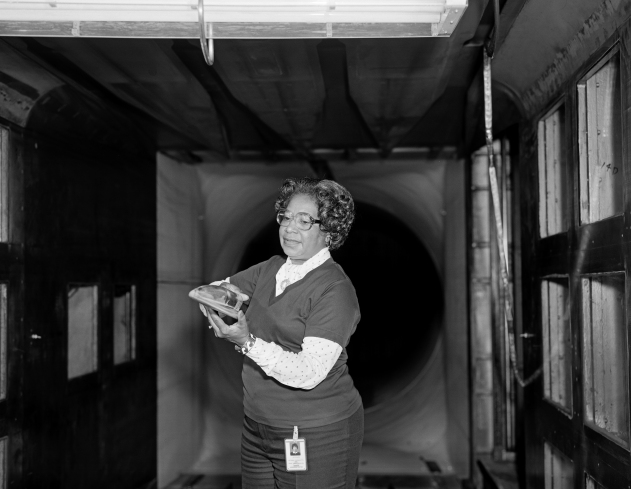
The Science and Technology Council of the Academy of Motion Picture Arts and Sciences, which awards the Oscars, presented a special screening of HIDDEN FIGURES with a conversation about space and cinema in collaboration with NASA. The Academy’s president John Bailey introduced this Sloan-supported event. Since the release of HIDDEN FIGURES in December of 2016, NASA has established “From Hidden Figures to Modern Figures,” an initiative that spotlights the legacy of Katherine Johnson, Mary Jackson, and Dorothy Vaughan whose lives inspired the characters in the film. NASA provides educational resources about the women, and also focuses on increasing diversity at NASA. Of the 18,000 civil service employees at the agency, only 6,000 are women and only 1,200 of those women are African American. The event featured three female NASA engineers–Tracy Drain, Jennifer Trosper, and Powtawche Valerino.

HIDDEN FIGURES is about the African-American female mathematicians who worked at NASA at the start of the Cold War computing trajectories for the first men to orbit the Earth, including John Glenn. The film was nominated for three Oscars for Best Picture, Adapted Screenplay, and Octavia Spencer as Best Supporting Actress. The Sloan Foundation supported the story by giving author Margot Lee Shetterly a grant to write the book Hidden Figures, and then the feature film received the Science in Cinema Prize at the San Francisco Film Festival.
“I can identify with being a woman in a group of men,” Jennifer Trosper, who is the Deputy Project Manager at NASA’s Jet Propulsion Laboratory (JPL) said to moderator Beverly Wood. “After I was the Curiosity Mission Manager [Curiosity is a rover on Mars searching for evidence of life], I was a JPL Fellow. A JPL Fellow is the highest level of technical accomplishment at the laboratory and there are 40 of us. But I am the only female fellow. That said, I know that there are women close on my heels and there will be lots of female fellows in the future.” No matter what obstacle was presented to the women in HIDDEN FIGURES they strove for excellence, Trosper noted. That ambition was something to which she could relate.
Powtawche Valerino also works at JPL where she was one of six analysts working on the spacecraft Cassini that orbited Saturn and its moons for 13 years, collecting data. “I could relate to the societal issues in the movie,” she said. “Growing up in Mississippi, in Louisiana, we still experience some of the separation and the mindset. Watching that movie, I know some scenes made you cringe, but it reminded me of situations growing up. So in that way I connected to those women by feeling, I’m not the only one. It is one of very few movies that presents that experience.”

The writer, director, and producer of HIDDEN FIGURES, Theodore Melfi, said that he “had never seen a movie that dealt with the everyday racism, the everyday slights, the things that still happen today.” He had those on the main crew of the film watch the 14-part PBS documentary EYES ON THE PRIZE (1987) about the American Civil Rights Movement in preparation for filming. Before making a film, Melfi said that he tries to come up with a word to define the film. “That word informs every single decision that will be made–from the photography to the editing to the music. And that word was ‘through.’ The women are going through racism, sexism. [Astronauts] are going through the atmosphere into space. Every single character is going through something. The thing about through is they’re not stopping. If you watch the film again a lot of the photography is through something–there is a barrier, a window, always something in the foreground as much as we could physically do that.”
In addition to Theodore Melfi, Tracy Drain, Powtawche Valerino, and Jennifer Trosper, the event “Hidden Figures/Modern Figures” featured Elizabeth Gabler, the President of FOX 2000 which released the film, the cinematographer Mandy Walker, editor Peter Teschner, and NASA’s chief historian Bill Barry. The full panel discussion is available to watch online. Separately, Science & Film interviewed NASA historian Bill Barry about “human computers” at NASA.
TOPICS